Liverpool are far from the well-oiled machine they were at times in Arne Slot‘s first season in charge and one of the main causes for concern is the way they press – or don’t press.
Three defeats on the bounce going into an international break is probably the worst thing a coach at a top club can ask for.
The extra time to dwell on the issues can exaggerate them, but it can also offer time to work on fixing them – at least in theory, as many players are away with their national teams.
Those defeats have led to questions being asked around Liverpool’s relatively stodgy start to the season, despite the team still sitting second in the league table.
Along with a few teething problems in attack, perhaps more pertinent are the noticeable issues with pressing and out-of-possession work.
Why pressing is such a big issue
Though it’s too early in the season to come to too many conclusions, problems with pressing and off-the-ball shape and decision-making can cause problems in attack as well as defence, and will need addressing soon.
There was a moment in Liverpool’s game against Chelsea when Dominik Szoboszlai closed down three or four consecutive opposition players as they passed the ball across the back line.
Once he pressed the final player in the chain of passes, to no avail, he turned around and gestured as if to say ‘where is the support?’.
This kind of lone closing down can raise questions about a team’s overall pressing system. Sometimes players will take it upon themselves to use a burst of energy to close down multiple players consecutively in a phase of play.
It isn’t necessarily a problem in isolation, and sometimes it is a pressing trigger in itself. One particular Andy Robertson example under Jurgen Klopp sticks in the mind, while Luis Suarez used to do this regularly.
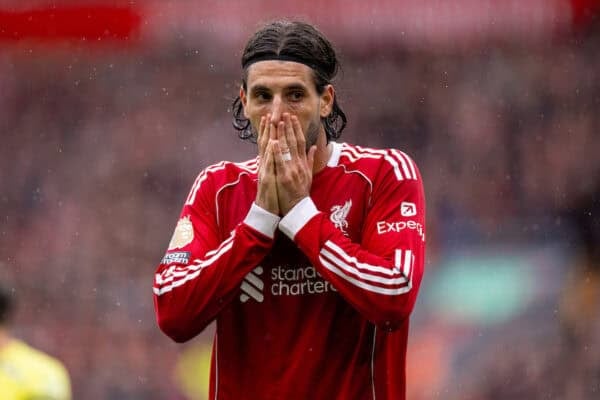
A properly organised pressing system shouldn’t rely on one player to close down multiple opponents too often. It will instead use the energy more economically by having multiple players closing down different areas.
This off-ball teamwork, and all players working as a coordinated unit, is when ‘closing down’ becomes ‘pressing’.
It’s safe to say Szoboszlai’s lone press didn’t work, and there were echoes of Suarez’s regular appeals to his team-mates to support him in something more proactive.
The numbers

Last season Liverpool’s pressing was – perhaps unsurprisingly in the post-Klopp era – slightly down on previous years, but it was sometimes still effective when deployed.
This season there is a feeling that both the numbers are down and that the pressing is more often ineffective.
Teams appear to be getting through Liverpool’s defensive structure earlier and are finding it easier (not necessarily easy) to play over or around the press.
It’s not always useful to look at numbers after just seven league games in a season and it’s not worth reaching too many conclusions from them, but for what it’s worth they do show Liverpool’s pressing has dropped off, having already dropped off last season in comparison to the Klopp era.
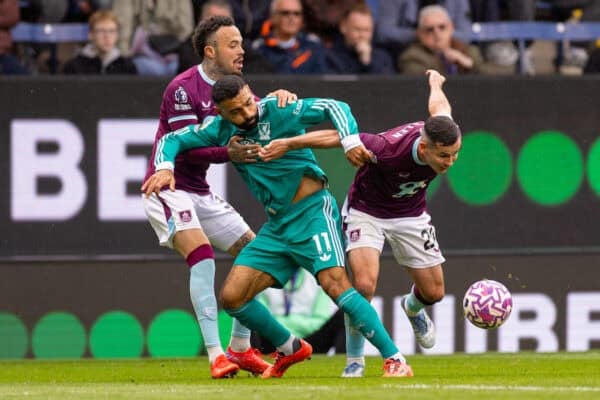
Possession won in the final third is down from 4.5 times per 90 last season to 3.9 this season.
Their opponents’ rate of passes per defensive action is up (indicating less pressing) from 8.9 to 9.4 per Understat, and pressed sequences (defined here) are down from 12.6 last season to 10.4 this season per Opta.
This is all dependent on opposition, and you don’t really get proper trends until more games are played.
Some of this drop in pressing could be explained by Liverpool facing a few low blocks so far. When they have more of the ball they naturally have to win it back less often.
This would suggest less defensive work for the centre-backs, but in fact their defensive numbers are up in both cases.

Last season, Virgil van Dijk averaged 8.1 defensive actions per 90. This season so far, he is on 11.3 defensive actions per 90. Ibrahima Konate averaged 6.9 in 2024/25 and 8.6 so far in 2025/26.
The central defenders are doing more, not less, while the pressing numbers further up the pitch are lower.
When combined, this suggests that the defending from the front is less frequent, less effective, or a combination of the two.
Further Opta data (via Cannon Stats) shows Liverpool are averaging their defensive actions the eighth-closest to their own goal of any Premier League side this season.
In short, less effective pressing is leading to more defensive actions being performed in deeper areas.
New signings

Coordination, timing and positioning are such a big part of an effective defensive setup, it’s no surprise that Liverpool have dropped off in this area.
New signings not only need time to get used to their team-mates in attack, but they also need time to get used to a defensive system.
They are also, in some cases, different profiles to the players they’re replacing, especially when it comes to those leading the line.
It’s a big test of Slot and his coaches in that they are now teaching new players their own systems from scratch.
With Florian Wirtz, Milos Kerkez, Jeremie Frimpong, Hugo Ekitike and Alexander Isak, there are no good pressing habits hanging over from the Klopp era. No bedding-in period.
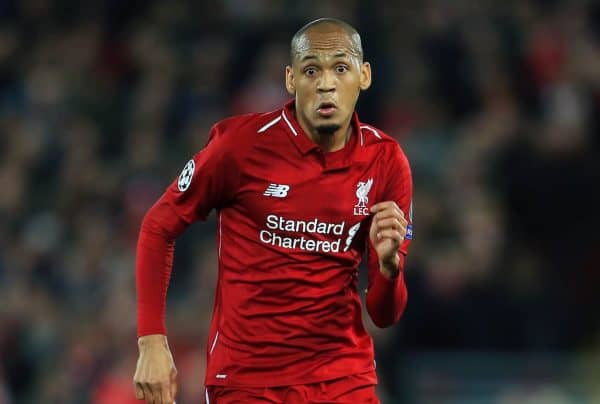
During the Klopp era, players would often take weeks or even months to get used to his defensive system.
Fabinho became one of the best players in the world in his position and was a key part of the titles won under Klopp, but took months to adapt.
Initially, Klopp raised concerns about Fabinho’s adaptation from playing in his more familiar role in a two-man midfield in front of the defence in a 4-2-3-1 (a role which can be referred to as a double six, as it was by Klopp, or a double pivot), to becoming the only defensive midfielder in a 4-3-3 (a single pivot in a 4-1-2-3).
Following a good performance against Red Star Belgrade in the Champions League in October 2018, Klopp commented that the 4-2-3-1 system used in that game – a diversion from his usual 4-3-3 – suited Fabinho, who was also celebrating his birthday on that day.
“The present for his birthday was not that he was in the starting lineup, it was that we played his favourite system with a double six,” Klopp said, describing Fabinho’s performance as “very good, very, very good.”
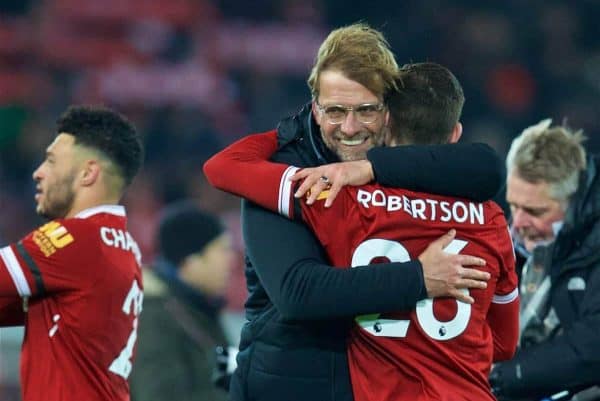
Fabinho was afforded time, as were players like Robertson, who was backup for some time before making the left-back spot his own.
One of the reasons some of Liverpool’s new signings under Klopp took weeks and months to adapt was not that they couldn’t fit into the attack, but because they were still not used to how Liverpool pressed as a team out of possession.
They had to learn when to press and when to hold, what opposition actions trigger the press, which areas they should be covering and when is the right time to spring forward from these areas in an aggressive press.
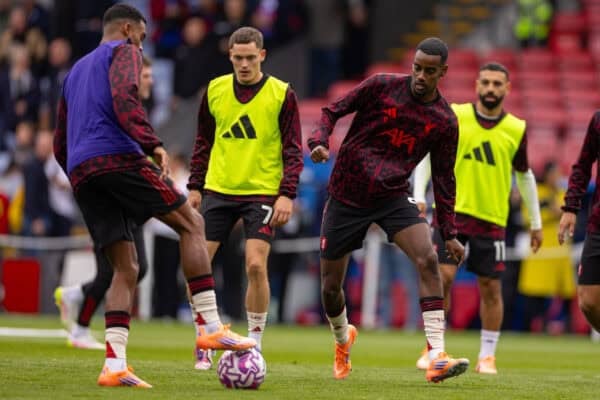
This adaptation to out-of-possession play could be a bigger reason for Liverpool’s stodgy start to 2025/26 than any issues in attack, especially when off-the-ball work has always been a big driver of the attack.
After all, counter-pressing is your best creator, as Klopp once said.
To bring this back into the context of the introduction of Liverpool’s new signings in 2025, Fabinho arrived that summer for the not-insignificant sum of £39 million, but that Champions League game against Red Star in October was only his second start.
Robertson only started two league games in his first four months at the club.

The latest group of signings under Slot have not had the luxury of such a bedding-in period. In ideal circumstances, some of Wirtz, Kerkez, Isak, Ekitike and Frimpong would be granted a similar adaptation time, but for various reasons they won’t be.
These reasons range from the reasonable expectation that £100 million-plus players such as Wirtz and Isak should slot straight in, to the fact that immediate upgrades were needed at full-back and these players needed to start straight away.
Such considerations are on the club, not the players themselves, and suggest Liverpool enacted too much of their rebuild in one go.
Crisis talk

None of this constitutes a crisis, as certain media reactions – and articles like this one – might suggest, but it is at least something to think about and a problem to solve.
Even when they were winning games earlier in the season Liverpool weren’t firing on all cylinders, and this has only been highlighted further since the run of three defeats.
It’s better to be second in the table and have a clear idea of which areas need improvement, as is the case with Liverpool, than it is to be mid-table and unsure of what the problems are or which might need addressing first, which is the case for some other teams.
Liverpool’s issues revolve mostly around their near-unprecedented first-team overhaul and players getting used to each other and their new coach’s methods.
And this adaptation applies to off-the-ball coordination as much as, and likely more than, it does for creating relationships in possession.
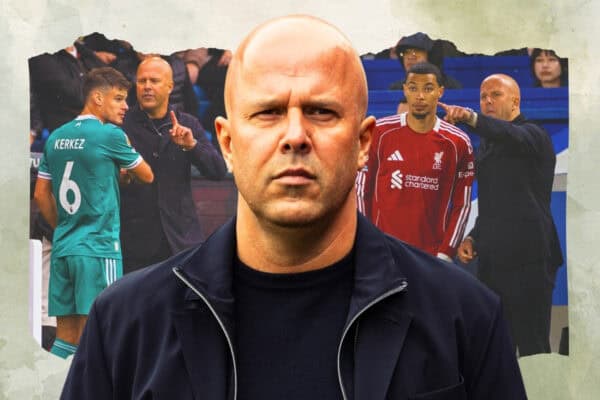








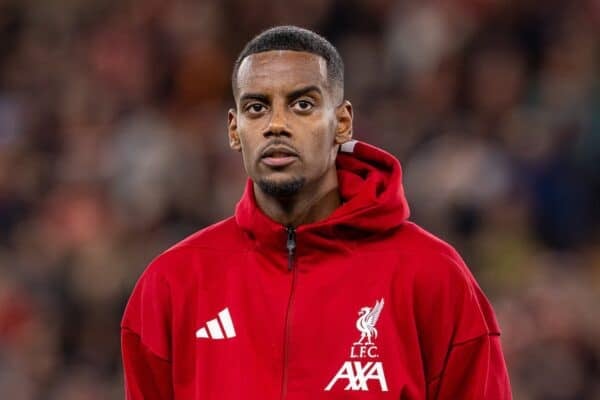


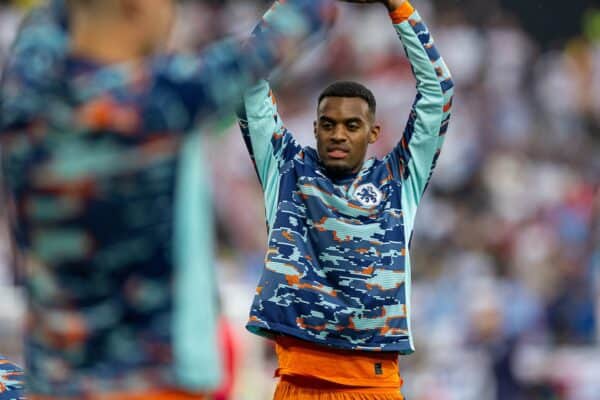
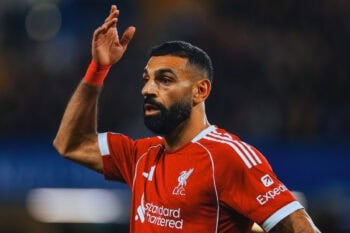
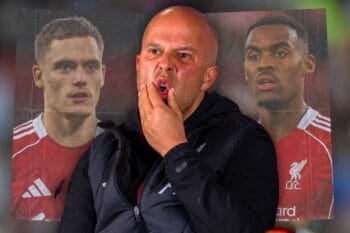
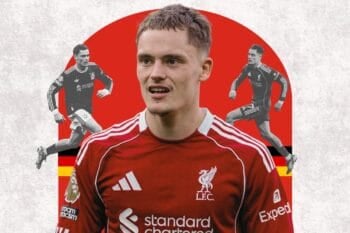
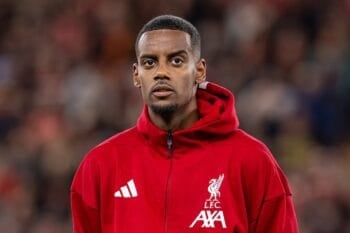
Fan Comments